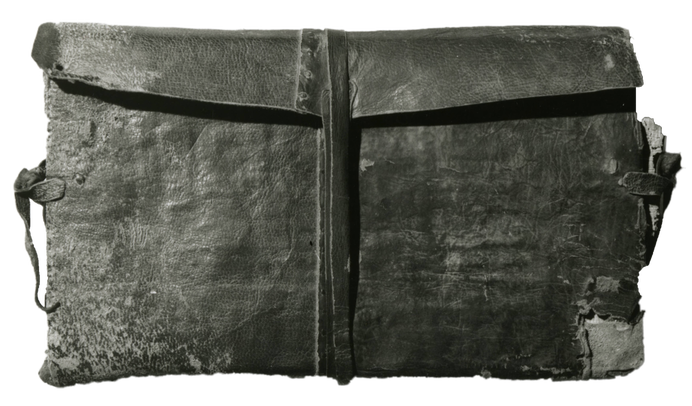|
One feature of the Nag Hammadi codices that has always fascinated me is the leather covers in which the papyrus codices were bound. According to the traditional story, the Nag Hammadi codices were discovered in 1945 by a native Egyptian while looking for sabakh, a natural fertilizer. It is claimed that he found them in a jar in the ground at the base of the Gebel al-Tarif. (On the question about this discovery, see most recently Nicola D. Lewis and Justine A. Blount, "Rethinking the Origins of the Nag Hammadi Codices," JBL 133.2 [2014]: 399-419.) Below are two images (open and closed) of the remarkably well-preserved cover of Codex IX, which was found intact. According to Birger Pearson, the papyrus codex was "cut out of the cover" in order to be preserved and mounted in between glass (Nag Hammadi Codices IX and X; [NHS 15; Leiden: Brill, 1981], 1). James M. Robinson offers a full analysis of this cover in the preface to the facsimile edition of Codices IX and X (The Facsimile Edition of the Nag Hammadi Codices: Codices IX and X [Leiden: Brill, 1977], 4). This cover was apparently made of sheepskin and goatskin and belongs typologically, according to Robinson, in a group together with Codices II, VI, and X. As with most of these leather covers, this one was reinforced with papyrus fragments (known as cartonnage), and those papyri have been published as well. What is interesting about the cartonnage is that they are datable and thus provide a terminus a quo (starting point) for Codex IX. The photos below were taken by Jean Doresse and may be found—along with many other excellent images of the Nag Hammadi codices, covers, cartonnage, etc.—at Claremont College's Digital Library. When we think of the Nag Hammadi codices, we normally think of the papyrus codices and their texts. However, these are fascinating pieces of 4th century Egyptian material culture that deserve to be studied and analyzed.
Post-scriptum: While the Nag Hammadi codex covers are remarkable, they are not unique. We have several such covers from other manuscripts; see some of them here.
1 Comment
Ted Weis
11/25/2014 03:56:17 pm
Very interesting! Thank you!
Reply
Your comment will be posted after it is approved.
Leave a Reply. |

Available at Amazon!
Archives
June 2020
Categories
All
|

